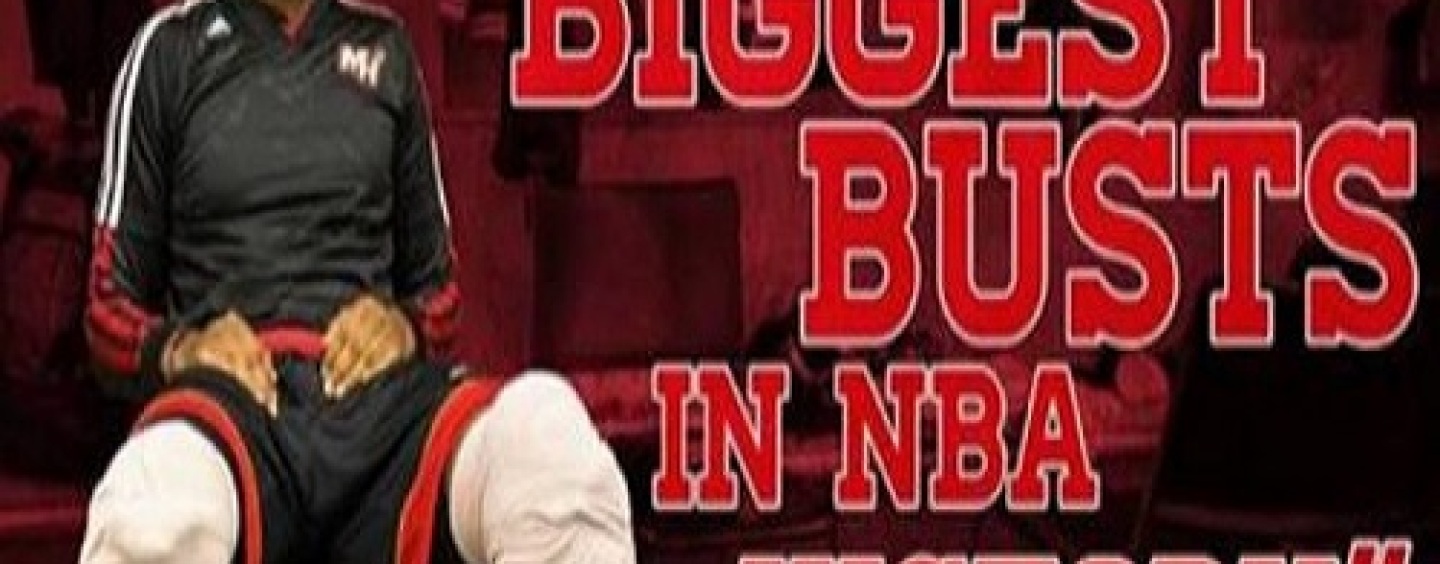
Greg Oden: ‘I Know I’m One of the Biggest Busts in NBA History’ And Thats Just Fine With Him!
by Tj Sotomayor May 9, 2014 1 commentI Know I Am A Bust!
The most entertaining first round in NBA playoff history is in the books, as are the countless story lines that accompanied the drama over the last two weeks, including Drake’s lint roller, Damian Lillard catapulting himself to even greater stardom, Sonya Curry returning to our lives, the Donald Sterling mess, five Game 7s, and Roy Hibbert’s overnight transformation from UConn Hasheem Thabeet to NBA Hasheem Thabeet.
One development that has received hardly any attention, though, is the one centering on the former no. 1 overall pick who made wavesripples last summer when he signed with the two-time defending NBA champions. It also happens to be my favorite NBA story line ever: Greg Oden — the player many NBA experts and fans believed (assuming he could stay healthy) would be the final piece in the Miami Heat’s quest to three-peat — is the only member on the Heat’s active roster not to see a single second of playoff action.1
Full disclosure: For the last 10 years, my identity has essentially been reduced to one of two things: “that benchwarmer guy who writes stuff” or “Greg Oden’s friend.” So, when I say that Greg sitting on the end of the Heat bench is my favorite NBA story in recent memory, I do so with a clear understanding of why the rest of the world has focused on other basketball matters. But for me, this is like being that paralyzed kid in Game of Thrones who does the Undertaker thing with his eyes and can suddenly see whatever his pet wolf sees. After riding the bench for some pretty good teams in college, I’ve always wondered what it would be like to do it in the NBA. In that regard, Greg is kind of like my wolf. Or maybe him riding the bench and finally seeing what it was like to be me in college makes me his wolf. I don’t really know. You figure it out.
Whatever the case, seeing a personal friend who was drafted no. 1 overall riding the bench for what could end up being one of the great NBA dynasties is perfect for so many reasons. I mean, this is the guy who once made fun of me for being nervous before a college game by saying, “What do you have to be nervous about? I’m the one who has to actually do something today.” After Greg didn’t see the court in the first two games of the Heat-Bobcats series, I decided to spend a few days in Charlotte for Games 3 and 4 to see how he’s handling his role, to learn the differences between college and NBA benchwarming, and, most important, to teach him the tricks of the 12th-man trade.
Given what Greg has been through physically, mentally, and emotionally since he entered the league, and because his default facial expression for as long as I’ve known him has been somewhere between “annoyed” and “depressed,” I’ve conditioned myself to expect him to look miserable every time I see him. Last week in Charlotte, the opposite was true. Having a positive attitude about your situation is vital to being a great benchwarmer, and Greg surprisingly had that covered. When I asked him if he was bummed that he wasn’t playing more, this was his response:
“Are you kidding? I was a professional rehab/workout guy for four years. I wasn’t even a basketball player — just a guy who got paid to exercise. I spent four years trying to get back on an NBA court. Now that I’ve done that, it’s not fair to myself to complain about minutes. I knew coming into this that I wasn’t going to be the player I once was. I just wanted to get healthy and then help out any way I could.”
That last bit is key. The Heat brought in Greg to be a secret weapon of sorts, which is another way of saying he was supposed to be the guy Miami could throw at Roy Hibbert in the conference finals when all else failed, like it almost did for Miami in 2013. A lot of people (myself included) let their imaginations run wild and envisioned an alternate reality where Greg regained his 2009 form, and where his addition to the Heat would make Miami the greatest NBA team ever. But 2009 Greg Oden is not walking through that door, at least not this season, and Greg’s role with the Heat was always going to be limited to playing in short, three-to-five-minute bursts. So, if Greg’s job is to be the Heat’s “Roy Hibbert playoff stopper” and to just contribute however and whenever else he can, then two things have made this role remarkably easy: (1) There’s already a “Roy Hibbert playoff stopper” and his name is Roy Hibbert,2 and (2) as long as LeBron James is around, the Heat will never need Greg to do anything.
Greg seems to understand this. Maybe sometime in the next month and a half, Miami will need him to step up in a big spot to keep the Heat’s championship hopes alive. Most likely, though, Greg’s minutes are going to come during mop-up time, which he has learned is much more difficult than it looks. “The thing about going in for the last couple minutes that nobody thinks about is how hard it is to get psyched up to play after just sitting there for over two hours,” Greg tells me, seemingly unaware that the title of my book (Don’t Put Me In, Coach) refers to this exact scenario.
It might sound crazy to an outsider, but there is something about suddenly hearing your coach tell you to check in after you’ve been sitting on the bench all game. It paralyzes you momentarily.3 Once you get on the court and the game gets going, instinct takes over. But that walk to the scorer’s table is 40 feet of panic that consists of quickly stretching, trying to warm up your hands, saying one last prayer, and mumbling “Shit! Shit! Shit!” under your breath. This is why the smart deep-bench guys stretch and blow warm air into their hands as much as possible as the game winds down, before the coach makes his final substitutions. No matter how warmed up a player gets himself on the sidelines, however, there isn’t a benchwarmer in basketball history who has looked cool while checking in during mop-up time. This is why many of us think the 10 seconds of terror it takes to check in aren’t worth enduring just to be able to say you played.
Of course, I’m speaking from my perspective as a college walk-on. I was curious to see if NBA benchwarmers go through the same mental trauma at the end of blowout games. When the Heat, up 18 points with 6:31 remaining in the fourth quarter of Game 3, called timeout, I got my answer. As the Heat bench stood up to form the timeout huddle, Greg and Shane Battier, who also hadn’t yet played in the playoffs at that point, locked eyes and starting stretching while laughing at each other. Fans who saw this happen may have thought:I get it. They’re jokingly stretching so they can be ready for their 30 seconds of action. It’s funny because they probably don’t even really need to stretch.
But walk-ons who saw this thought: May God have mercy on their souls.
Battier eventually got the nod from Erik Spoelstra and put up a 2 trillion. Greg was lucky — he got to see the clock run out from the same spot where he watched the rest of the game. That was fine by him.
“It’s not that I don’t want to play or even that I get nervous,” Greg told me after the game. “I’d love to play meaningful minutes. It’s just that my body is at a point where it takes a process for me to get physically ready to play and a process for me to recover. It’s just not worth going through all of that to play a minute or two in a blowout.”
I’m not sure of the precise details of Greg’s process, but with his history of injuries, it’s presumably something like this: He has to live with a tapeworm in his intestine for a month to cut weight, spend a week in a cryogenic chamber, and then sacrifice a baby lamb to the basketball gods so they will continue to allow his broken-down body to play. I had assumed the Heat kept Greg on a schedule, where he knows in advance if he’s going to play. He assured me this wasn’t the case for Game 3, and he went through the same mental torture toward the end of the game that I went through for four years at Ohio State. Game 4, however, was a different story. With the Heat holding a commanding 3-0 series lead and Charlotte’s starting center and best player, Al Jefferson, out with a foot injury, Greg was told the day before the game that he wasn’t going to play.
Upon hearing this, I couldn’t help but feel bad for Greg. For four years, he worked hard to get back into the league when 99.9999 percent of the people in his situation would’ve just thrown in the towel. Now, he wasn’t even going to see the court in the first round of the playoffs. On paper, signing with the Heat seemed like a perfect fit. In the best-case scenario, Greg would still have been the team’s fourth-best player. He would never have to deal with the kind of pressure to be great that weighed on him in Portland. All he’d have to do was grab some rebounds, block some shots, and get on the business end of alley-oop passes from LeBron and Dwyane Wade when defenses collapsed on them.
But instead, being a member of the two-time defending NBA champs has almost backfired. As he has gradually worked his way back into game shape (a process he admits is more frustrating and difficult than he thought it would be), Miami has proven it doesn’t really need him to win. Throw in the way Hibbert dominated Greg in the beginning of that late-March game and it’s easy to see Erik Spoelstra’s thought process: We don’t need Greg to win, he wasn’t very effective in the exact situation where we thought we’d need him, and he has chronic pain from his history of knee injuries (not to mention his recent back spasms). With that, is there any reason why I SHOULD play him?
I met with Greg the day before Game 4 at a downtown Charlotte sports bar, where we watched other playoff games, threw a few back (a few Diet Sunkists, that is), and shared our theories onhow Josh McRoberts keeps his hair in place without using a headband or gel. The conversation eventually turned serious.
I asked him straight-up: “If this is the final chapter of the Greg Oden story — if you’re destined to be a benchwarmer for the rest of your career — are you OK with that? Will you be satisfied with your legacy?”
“I’m over all of that,” Greg told me. “I know I’m one of the biggest busts in NBA history and I know that it’ll only get worse as Kevin Durant continues doing big things … It’s frustrating that my body can’t do what my mind wants it to do sometimes. But worrying or complaining about it isn’t going to fix anything … I wish the circumstances would let me play more, but I certainly don’t regret coming back, and I don’t regret signing with the Heat.”
Greg eventually convinced me that he has truly embraced his role, which, when paired with the certainty that he wasn’t going to play in Game 4, was all I needed to hear to jump at the opportunity to show him the benchwarming ropes. I immediately started suggesting he do all the things I wanted to do in my 12th-man days but never had the balls to try. Things like:
- Put
beerDiet Sunkist in your water bottle. - Put a few pocket dogs in your warm-ups and casually eat them throughout the game.
- When the bench stands up to high-five a teammate who is coming out of the game or to cheer for a play, move one seat closer to the scorer’s table when you sit back down. The goal is to keep doing this one seat at a time until you eventually steal the head coach’s seat.
- Have a contest with another benchwarmer to see who can walk the farthest onto the court during a live-ball situation. This is known asTom Izzo–ing. Also, I’m pretty sure Jake Lorbach has the record, or at least the record for when the ball is in the same half of the court the benchwarmer is in.
- Mock all the guys who wear long sleeves and full-length tights by pretending to be so cold that you need a Peyton Manning mask.
I knew it would be hard to convince Greg to attempt any of these, seeing as how I’ve always been up for just about any goofy stunt, and even I was too afraid to try them during my benchwarming days. But Greg had something I never did — a contract. College basketball walk-ons who cross the line get sent packing in the blink of an eye. But the Heat probably wouldn’t bother dragging Greg into a costly buyout mess just for eating a pocket dog on the bench.4 After explaining this to Greg 100 times, he eventually came around and promised he’d have some fun on the bench during Game 4.
But here’s the thing: Greg lied. I sat two rows behind him for the entire game. For all four quarters, I waited for him to do something stupid so we could look at each other with shit-eating grins and give the thumbs-up sign. That moment never came. There was no Manning mask. There were no pocket dogs. There was no walking onto the court during the game or trying to steal a teammate’s seat. And you know what — I was fine with that. It was probably asking too much for him to pull stunts that even I never tried.
Here’s what I wasn’t fine with, though: Greg might be the single worst benchwarmer in basketball history. I understand not wanting to sneak hot dogs onto the bench, but Greg didn’t even do routine benchwarmer things. He didn’t scan the crowd for women to make eye contact with and maybe toss in a “Sup?”/head-nod combo if the eye contact were good. He paid attention to the huddle during timeouts instead of the 7-year-old kids jumping rope or dancing or whatever the hell it is they did. When LeBron was out of the game, Greg didn’t sit next to him so he could get on TV. It’s like he was purposely trying to crap on everything I stand for.
“What the hell was that?” I asked him after the game. “You couldn’t at least throw a towel over your shoulders?”
“Sorry, man,” Greg replied. “I’m not jeopardizing my playoff bonus.”
“Wait, even though you didn’t play, you still get a playoff bonus?”
“Well, probably not if I’m eating hot dogs on the bench.”
I eventually found out that an NBA title for the Heat would give Greg more money in playoff bonuses than I make in a year, and suddenly everything made sense: This is the essential difference between college benchwarming and NBA benchwarming. Riding the pine isn’t some goofy pissing contest for NBA athletes. Sure, the league has its enthusiasm czars like Kent Bazemore and Robert Sacre, whose amped-up hype-man routines on the bench can be fun to watch. But for the most part, NBA reserves aren’t “just happy to be here,” like nearly every college walk-on is. College benchwarmers know they’re never going to crack the rotation. They embrace their roles and have as much fun as they can because simply making the roster and getting to wear the jersey is a dream come true. NBA benchwarmers are competing for their future livelihoods — the chance to earn more playing time, to have a team pick up its option on the final year of a contract, to develop a reputation as a good “locker room guy” teams want to have around. A five-figure playoff bonus might not be that big a deal to the LeBrons of the world, but that’s a nice chunk of change for the league-minimum guys at the end of the bench. With that in mind, it’s easy to understand why they take their jobs more seriously than their college counterparts. Different circumstances breed different philosophies.
But, as Greg mentioned when we met, despite all the differences between NBA reserves like Greg and D.J. White and the walk-ons at UConn and Grambling State, and even Division III guys who ride the bench and the high school JV players who dress for varsity games, the Benchwarmer Mantra unites us all:
“It doesn’t say how much you played on your championship ring.”
Pages: 1 2

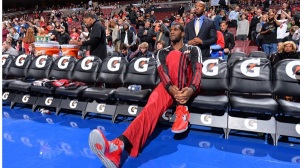
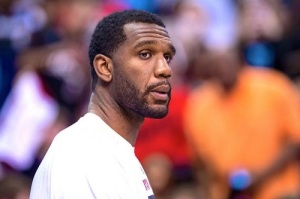

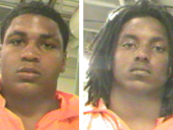

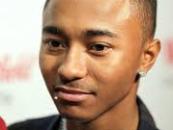


1 Comment so far
Jump into a conversationGreat article! What a joy to read.
Oden, you are not a bust. You are a young man just getting started on his journey. Appreciate the perspective; it is priceless! Love you man.
Only registered users can comment.